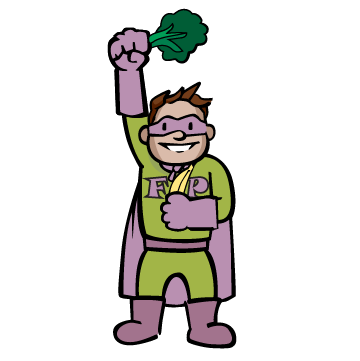Boston Children's Museum
308 Congress Street, Boston, MA 02210
617-426-6500
© Boston Children’s Museum 2025
Website Design by JackrabbitMost children have come into contact with a wide variety of fruits and vegetables, but few have ever taken the time to examine these foods closely. Offering children an opportunity to carefully study objects that seem so familiar will give them a chance to practice their observation skills and may encourage them to more carefully observe other things that they take for granted. In addition, children will gain a fresh perspective on familiar fruits and vegetables and learn about some not-so-familiar kinds as they identify, investigate and sample a variety of these foods.
Gather a variety of fruits and vegetables. Try to collect some familiar kinds (like apples, oranges, bananas, carrots, celery and brussels sprouts) and some that children might not have seen before. Papayas, figs, passion fruit, artichokes, pomegranates, eggplant and different kinds of beans and peas are really interesting on the inside and will be fun to dissect. If you have any markets that sell fruits and vegetables that children may be unfamiliar with because they are more common in other cultures, using these foods can provide a great opportunity to introduce them to those cultures, especially if students in your afterschool represent some of the countries those foods came from. Wash all of the fruits and vegetables ahead of time.

Ask your students to name some fruits and vegetables that they know. Record this list on a piece of chart paper or a chalkboard. What do they think is the difference between a fruit and a vegetable? Show them the food that you have collected. Do all of them look familiar to your students? If there are any that they have not seen before, tell them what they are called and where you purchased them.
Take a closer look at these fruits and vegetables!
After 5–10 minutes, when each team has examined their items and divided them into “fruits”, “veggies” and “I’m not sure” groups, bring them together to talk about what they observed. Have each team share with the rest of the group something interesting they noticed about 1 or 2 items. Then ask the teams how they decided which foods were fruits, which foods were vegetables and which ones they weren’t sure about. Can the whole class agree on some “rules” for deciding which is which?
How might they examine their items even further? Some students might suggest cutting the foods open to look at the inside. Tell them that you will go from team to team and cut open their foods so that they can more closely examine them and learn a little more.
Move from team to team with the knife and cut all of the foods that the teams have labeled “fruits” in half. Try to cut most of the fruits lengthwise. Ask teams to again examine and observe, writing down anything that they notice. Does the fruit have seeds? Where are they? Do you notice any patterns in the fruit? Does the fruit get peeled before eating it? What do you notice about the peel? What could you do with the peel or with the seeds?
Next, ask teams to examine the vegetables. What part of the whole plant do you think they were? Move from team to team and cut the veggies in half and in pieces so that students can study them more closely.
Save the cut up fruit and vegetables to use in the Food Power – Design a Dip activity, or eat them right away!